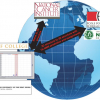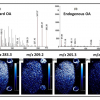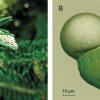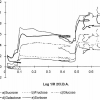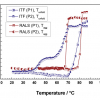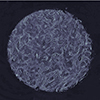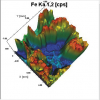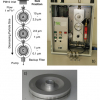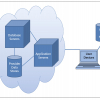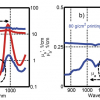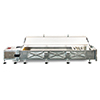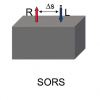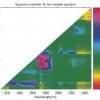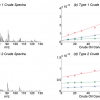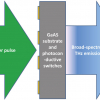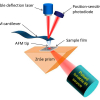Articles and Columns
The Tony Davies column is a joint effort by Tony (A.N.) Davies, Mohan Cashyap, Bob Lancashire and Bob Hanson on “Exploring distributed, multi-server 1H NMR prediction”. This is the second part of the column’s investigation into the use of cloud-based services in the analytical arena. It describes a web page linking services from multiple sites on both sides of the Atlantic to deliver molecular structure drawing, 3D structure representation, name to structure conversion and display of data generated by linking chemical structures to 1H NMR prediction. May I reiterate Tony and Mohan’s plea for information on such cloud-based solutions, whether commercial or not. These can be sent to me ([email protected]) and I will pass them on.
Robert Bradshaw and Simona Francese tell us about “Matrix–assisted laser desorption ionisation tandem mass spectrometry imaging of small molecules from latent fingermarks“. Especially when looking at small molecules in fingermarks, isobaric species can be a problem and this has the potential to affect the outcome of any court case if not handled appropriately. Tandem mass spectrometry can be used as an alternative to high-resolution MS and ion mobility.
“Shedding light on plant biology by Fourier transform infrared spectroscopy of pollen” by Boris Zimmermann and Achim Kohler. Currently, pollen identification is mostly done under a light microscope. FT-IR spectroscopy of pollen grains provides rapid and simple identification of pollen, with the added benefit of providing environmental information.
Tony (A.M.C.) Davies continues on his last furlong, this time considering “Classification and identity testing”. As well as some interesting insights into the analytical lab in the late 1960s, he gives his opinion on various chemometric techniques and on identity testing, as well as thoughts on future development.
Peter Jenks is off to a conference. He describes the history of the Biological and Environmental Reference Materials (BERM) series of conferences and concludes that they still are important for all of us 30 years after their start. He urges you to attend the next, in October 2015 in the USA.
Orthogonal spectroscopic techniques for the early developability assessment of therapeutic protein candidates” are described by Patrick Garidel, Anne Karow and Michaela Blech. Due to its cost and time implications, in the early development phase of drug discovery the use of othogonal techniques, based on different physical observables, is important for correct decision-making.
Mid-infrared spectroscopic imaging is a rapidly emerging technique in biomedical research and clinical diagnostics that takes advantage of the unique molecular fingerprint of cells, tissue and biofluids to provide a rich biochemical image without the need for staining. Spectroscopic analysis allows for the objective classification of biological material at a molecular level.1 This “label free” molecular imaging technique has been applied to histology, cytology, surgical pathology, microbiology and stem cell research, and can be used to detect subtle changes to the genome, proteome and metabolome.2–4
John Hammond and Chris Burgess are also in the middle of a multi-part contribution to the Quality Matters column. “…that’s what I thought you said?” looks at further misundertandings in terminologies surrounding Reference Materials, and sets the record straight.
Another area of application of XRF, “Determination of elemental distribution or heterogeneity by X-ray fluorescence”, is considered by Christopher Shaffer and Didier Bonvin. The ability of modern X-ray spectrometers to perform small spot analysis as well as mapping has opened up new applications in non-homogeneous samples. The authors show applications in metals, precious alloys as well as rocks.
Knowledge about the particles in the air is important because of their effect on our health and their impact on our climate through cloud formation and transport of nutrients into the oceans. Ursula Fittschen describes “Strategies for ambient aerosols characterisation using synchrotron X-ray fluorescence: a review”. This technique can provide elemental determination and speciation of aerosol particulates with limits of detection in the pg m–3 range for many elements.
In the Tony Davies Column, Tony (A.N.) Davies and Mohan Cashyap introduce us to the potential for Cloud Computing in the lab. This is the first of a two-part contribution, and, for the second part, they need your help with your experiences of Cloud Computing in your lab or organisation.
The analysis of turbid samples is increasingly important, not least due to their widespread occurrence in natural samples. Dmitry Khoptyar, Sören Johansson, Staffan Strömblad and Stefan Andersson-Engels show “Broadband photon time-of-flight spectroscopy as a prospective tool in biomedicine and industrial process and quality control”. The authors describe their recent development of a broadband spectrometer for evaluation of absorption and scattering spectra of very diverse turbid materials in the visible and close-near infrared (NIR) regions and its application with milk, cheese and paper samples.
It is important that places of archaeological and architectural importance need to be explored without damage. Atomic Dielectric Resonance (ADR) can be used for identifying sub-surface geological features. This technology1 uses a novel coherent beam, which has been used in the oil, gas and water industries, to provide information on what lies beneath the earth’s surface, without the need to drill cores.
“Spectral database for postage stamps by means of FT-IR spectroscopy” by Eleonora Imperio, Gabriele Giancane and Ludovico Valli will be of great interest. As well as helping to detect forgeries, FT-IR has been used to create a database which also charts the history of the technology used to create stamps. Quite rightly, they are considered by many to be works of art.
“Emerging sampling approaches for Raman analysis of foods” by Nils Kristian Afseth, Matthew Bloomfield, Jens Petter Wold and Pavel Matousek describes how a number of instrumental developments are enabling Raman spectroscopy to find increasing applications in food analysis. They show how Spatially Offset Raman Spectroscopy (SORS) is being used to analyse quality parameters in salmon, including the content of fat, its fat composition and the content of carotenoids. Traditionally, the preserve of NIR spectroscopy, Raman may increasingly be used for the analysis of food and other biological matrices.
Tony (A.M.C.) Davies looks at Multiple Linear Regression (MLR) this issue, as well as expressing his opinions about Principal Components Regression (PCR) and Partial Least-Squares (PLS).
“Membrane inlet mass spectrometry for in situ environmental monitoring” by Simon Maher, Fred Jjunju, Iain Young, Boris Brkic and Stephen Taylor looks at a technique that is 50 years old but is now being applied for field analysis. As well as a brief overview of the technique, they show how it can be used to monitor oil-in-water levels before discharge from oil termini.
Malvina G. Orkoulaa and Christos G. Kontoyannisa,b
aDepartment of Pharmacy, University of Patras, Rio-Patras, Greece. E-mail: [email protected]
bICE-HT/FORTH, PO Box 1414, University Campus, Rio-Patras, Greece
Tony Davies explains “Terahertz Spectroscopy” and describes some new and interesting applications
The authors give us a “Review of nanoscale infrared spectroscopy applications to energy related materials”. Fuel cells, photovoltaics and specialised polymers for fracking are all considered.

